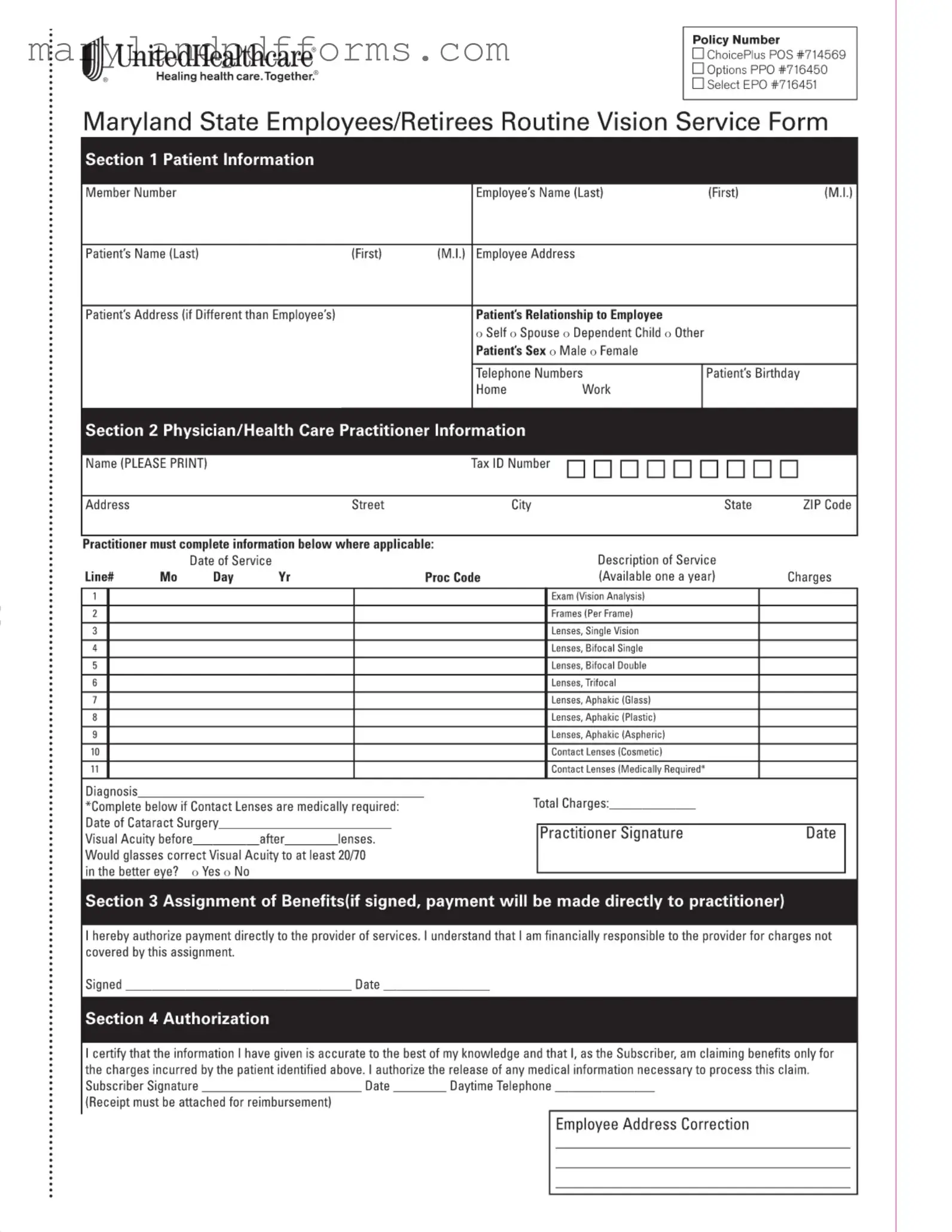Blank Maryland Employees Vision Template
The Maryland Employees Vision form is a document designed for Maryland state employees and retirees to file claims for vision services. This form facilitates the process of obtaining reimbursement for routine vision care or allows for direct payment to the healthcare provider if the Assignment of Benefits is signed. For those eligible, completing this form is essential for accessing vision care benefits, so be sure to fill it out by clicking the button below.
Fill Out Maryland Employees Vision Now
